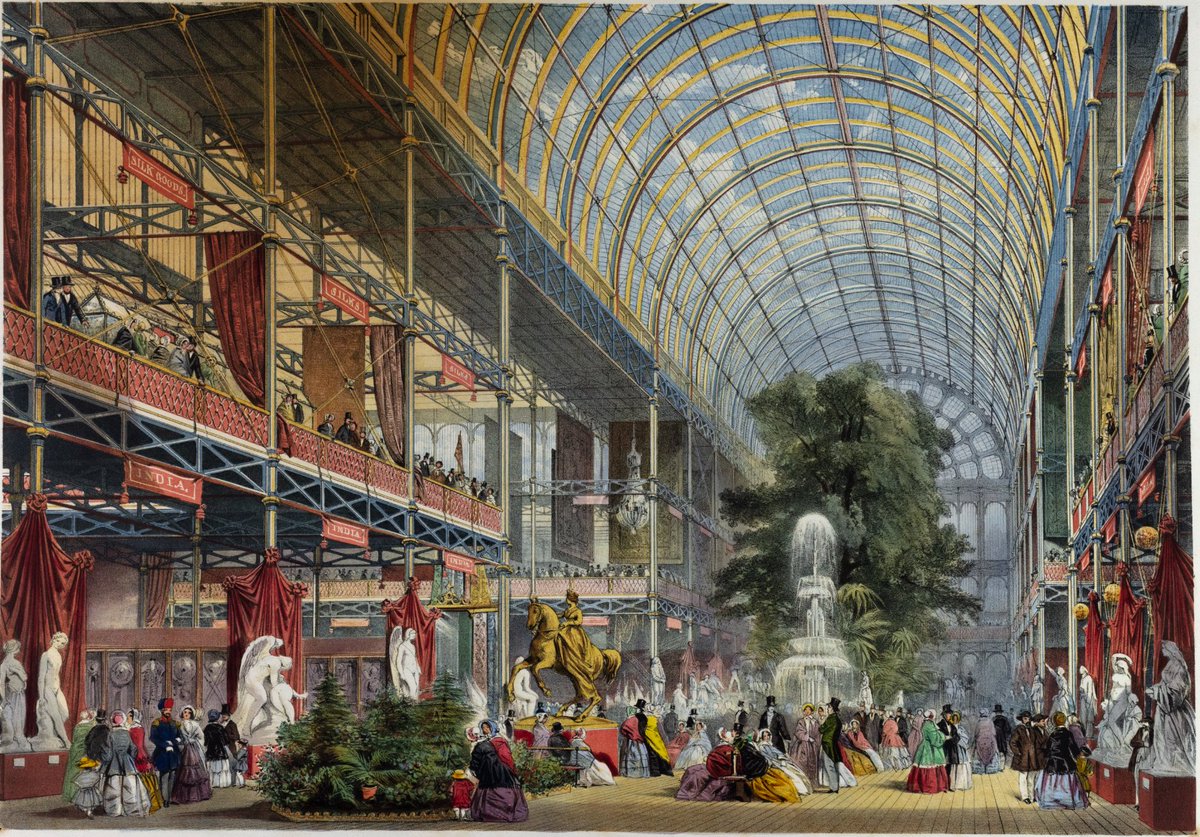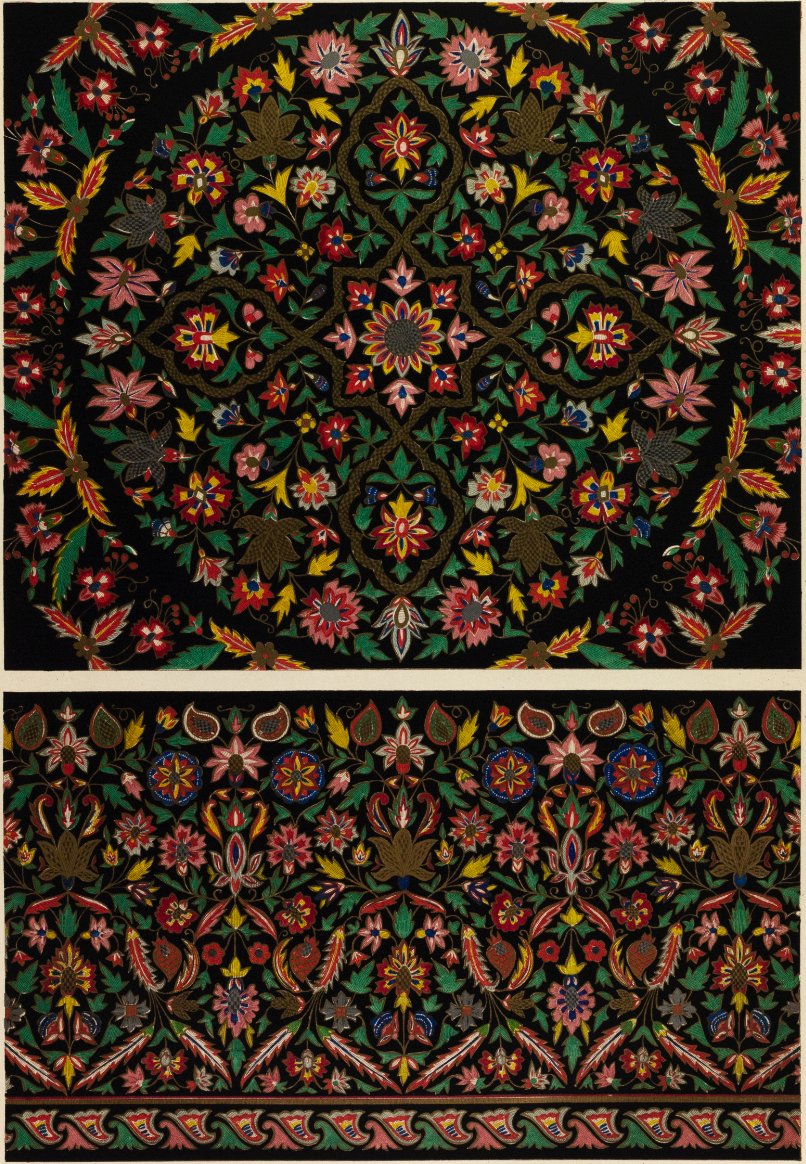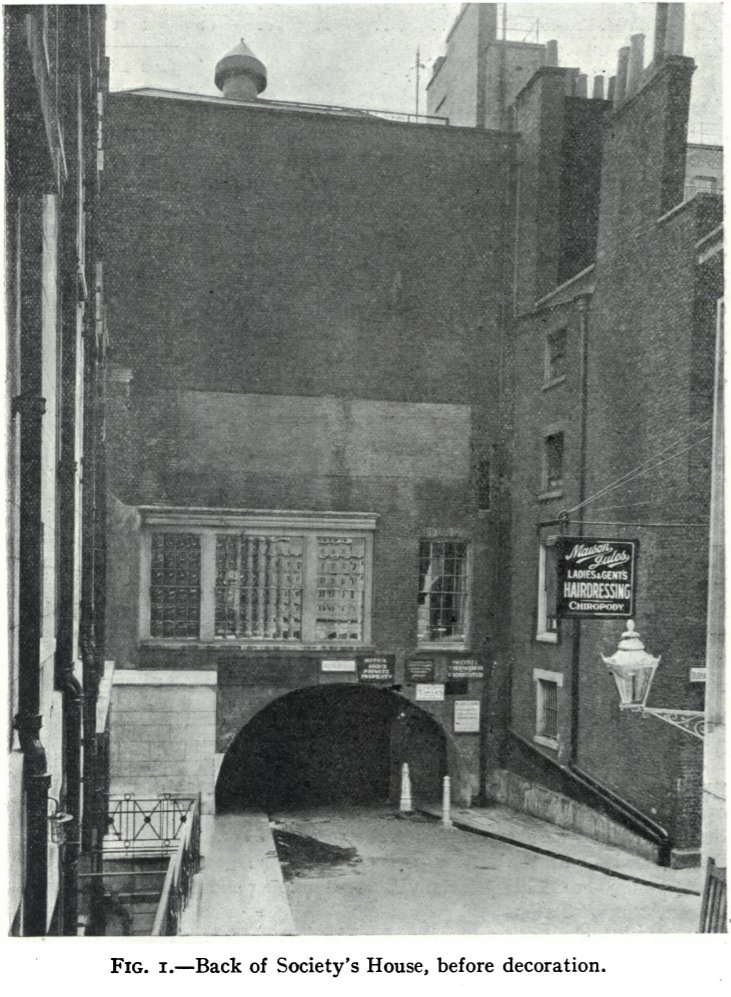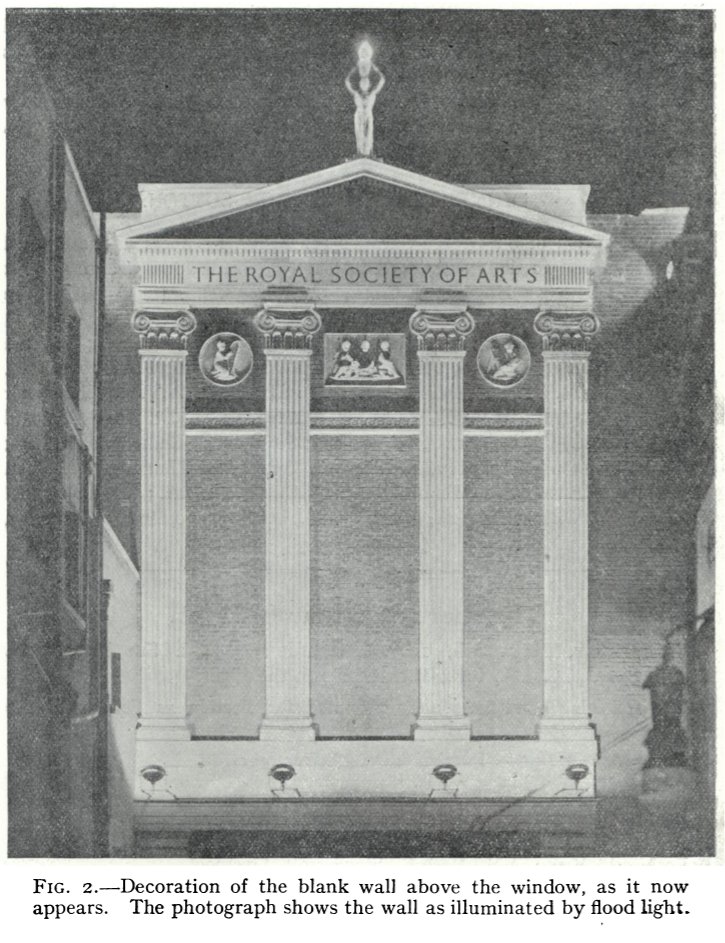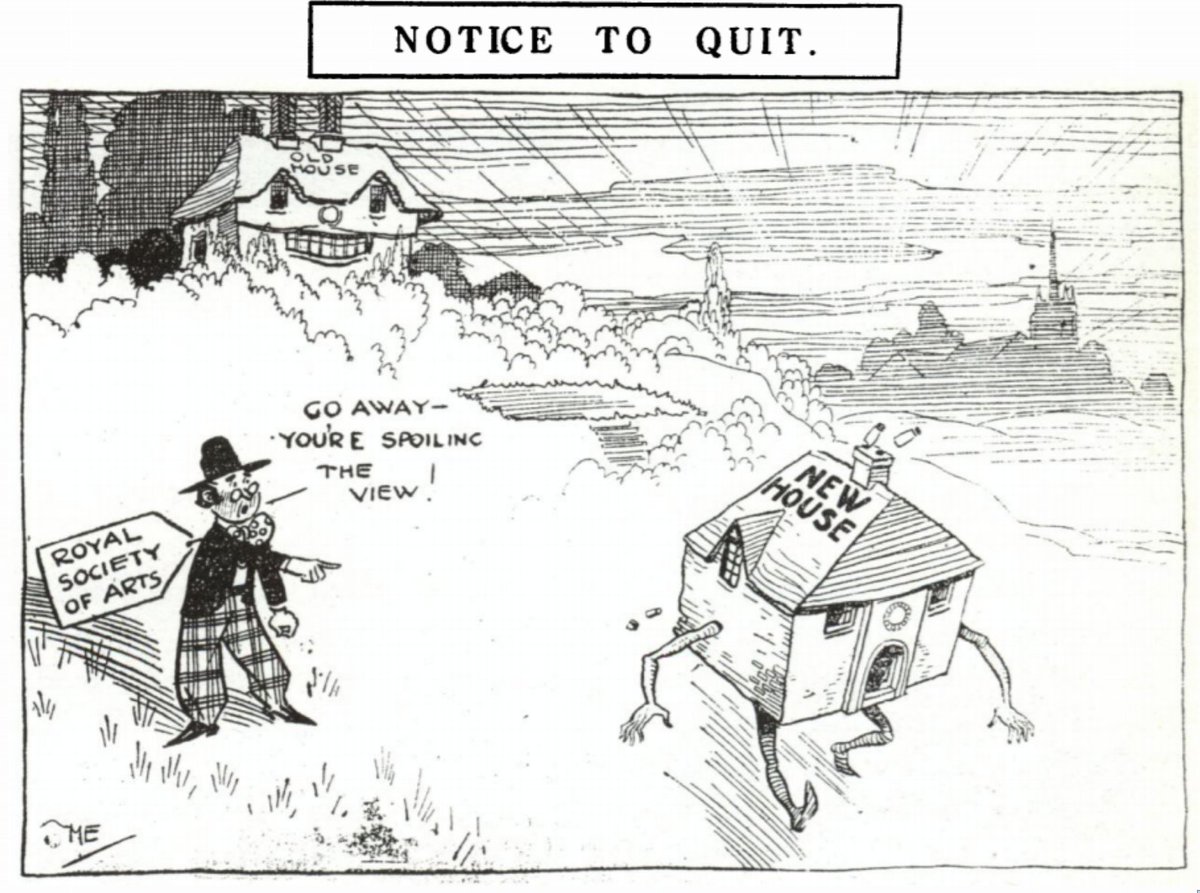Have I told you about the time @theRSAorg purchased pretty much the entire village of West Wycombe?
One of the Society& #39;s many random projects in its role as the country& #39;s semi-official national improvement agency, and one of my favourites. A thread:
One of the Society& #39;s many random projects in its role as the country& #39;s semi-official national improvement agency, and one of my favourites. A thread:
To explain why, we need to wind back to another of the Society& #39;s projects, the Great Exhibition of 1851. It aimed to display examples of the best of industry from around the world under a single roof.
With over 6m attendees in the space of a few months, it was a sensation.
With over 6m attendees in the space of a few months, it was a sensation.
Few exhibits, however, caused more of a stir than the examples of craftsmanship from India.
The revelation was, as one French visitor put it, "a revolution", especially as people wondered at "the general feeling for art which may be found in the humblest classes of workmen."
The revelation was, as one French visitor put it, "a revolution", especially as people wondered at "the general feeling for art which may be found in the humblest classes of workmen."
Even the French - widely considered the best designers in Europe - exclaimed that Indians must be "the Frenchmen of the East".
What was so shocking, however, was that the designs came not from artists, who prided themselves on their *intellect*, but from ordinary craftsmen.
What was so shocking, however, was that the designs came not from artists, who prided themselves on their *intellect*, but from ordinary craftsmen.
Painters like Joshua Reynolds in the 1760s had insisted that good design trickled down from high art, to eventually be captured by the "mere" manufacturers.
The Indian works suggested instead that good design could come from the accumulated traditions of uneducated craftsmen.
The Indian works suggested instead that good design could come from the accumulated traditions of uneducated craftsmen.
Artists like Owen Jones came to worry that mechanisation in Britain had separated makers from their creations, so that they lost their subtle feel for the materials and processes of their craft.
Art critics like John Ruskin agreed, pointing to the beauty of medieval designs.
Art critics like John Ruskin agreed, pointing to the beauty of medieval designs.
Altogether, these concerns heavily influenced a new generation of artists, many of them involved with @theRSAorg. The Society hosted exhibitions for a new Society of Wood Carvers, and offered prizes for art-workmanship. It even helped establish a School of Art Wood-Carving.
And Ruskin& #39;s writings heavily influenced a young William Morris, who was to become an intellectual founder of the movement to reverse the decline: Arts and Crafts.
(Morris had, aged 17, apparently attended the Great Exhibition himself, but found the event "wonderfully ugly")
(Morris had, aged 17, apparently attended the Great Exhibition himself, but found the event "wonderfully ugly")
Morris was involved in judging some of the Society& #39;s various prizes in the 1880s, and in 1889 it collaborated on an exhibition with the Arts and Crafts Exhibition Society. By the early 20thC the Society was heavily imbued with Arts and Crafts. Just look at its 1906 journal:
By the 1920s, the Society of Arts had in particular become a focal point for one of the Arts and Crafts movement& #39;s major concerns: the preservation of medieval and Tudor cottages.
Although state-owned and prehistoric sites were increasingly protected, private property was not.
Although state-owned and prehistoric sites were increasingly protected, private property was not.
More and more old buildings were being demolished. It was the backdrop for the founding of the @SPAB1877 by Morris, and of the @nationaltrust. Yet things in the 1920s were rapidly becoming worse: roads were being widened for the motor car, and public health laws added costs.
The 1904 Public Health Act had made it illegal for landlords to let properties below certain sanitary standards, which especially affected the oldest cottages: they were partitioned into cramped rooms, lacking proper drainage or plumbing. It was often cheapest just to demolish.
Even the Society of Arts itself was affected by the new changes. The widening of the Strand exposed its bare-brick behind, which was quickly beautified with pilasters and statues to look more like the front.
Yet the old cottages would not be so lucky. Something had to be done.
Yet the old cottages would not be so lucky. Something had to be done.
Thus, at the instigation of Morris devotee and architect Frank Baines, the Society in 1927 started a fund "for the preservation of ancient cottages", with the Prime Minister Stanley Baldwin giving the opening address. (The next meeting had his Labour rival, Ramsay MacDonald).
As well as preservation, Baldwin decried "those abortions of red brick and slate" that had replaced them. The message struck a chord.
Soon, one well-wishing landlady donated a cottage in Herfordshire, which she lacked the means to preserve. A couple more were bequeathed.
Soon, one well-wishing landlady donated a cottage in Herfordshire, which she lacked the means to preserve. A couple more were bequeathed.
The Society used the fund to purchase a small group of cottages - three here, a row there - saving them from condemned. But then in 1929 it took a big step to take things further - a PR move to act as a rallying cry to all fans of old England. The purchase of West Wycombe.
This involved buying about 50 cottages, some of them from Tudor times, and a few condemned by sanitary inspectors, along with a 15thC church loft and two inns. Curiously, much of the money came from American donors, keen to preserve the idyllic vision of their ancestral country.
In 1934, when the work was completed, the Society handed West Wycombe over to the @NationalTrust.
But the fund& #39;s real legacy was to spark a mass movement.
Up and down the country, people began pushing their local authorities to preserve.
But the fund& #39;s real legacy was to spark a mass movement.
Up and down the country, people began pushing their local authorities to preserve.
The Society soon had people writing to its Journal to deplore all manner of new assaults on the beauty of the English countryside. Unsightly petrol stations. Roadside advertisment billaboards. One especially passionate activist even called for vigilantes to tear them down.
As ever, however, having started things, the Society& #39;s own role came to end and it moved onto new things to improve. It passed the baton onto other orgs like @CPRE and @nationaltrust.
For more, see my book: https://www.amazon.co.uk/Arts-Minds-Society-Changed-Nation/dp/0691182647/ref=tmm_hrd_swatch_0?_encoding=UTF8&qid=&sr=">https://www.amazon.co.uk/Arts-Mind...
For more, see my book: https://www.amazon.co.uk/Arts-Minds-Society-Changed-Nation/dp/0691182647/ref=tmm_hrd_swatch_0?_encoding=UTF8&qid=&sr=">https://www.amazon.co.uk/Arts-Mind...

 Read on Twitter
Read on Twitter
